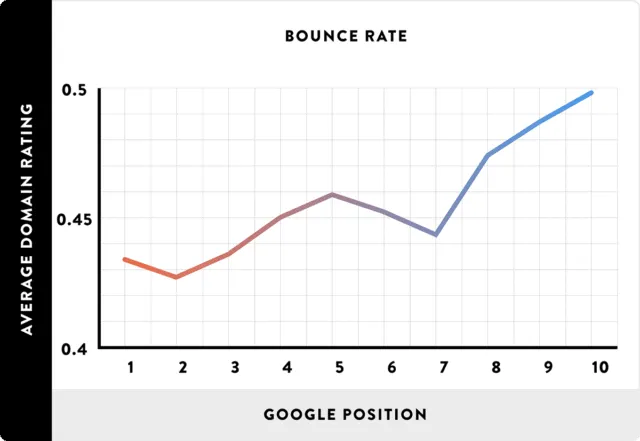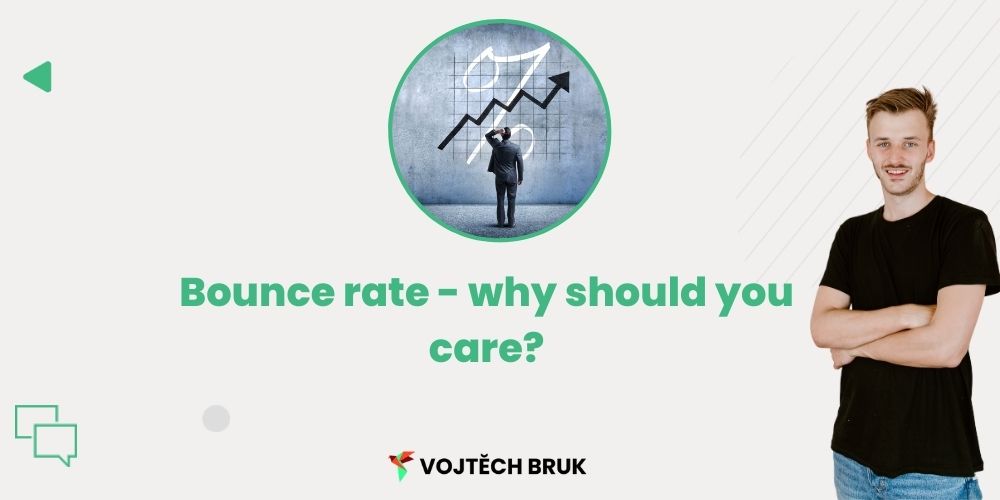According to Google, the bounce rate is the number of sessions in which visitors visited only one page on your site and left again without taking any further action (submitting a form, clicking on a menu, going to another article…) divided by the total number of sessions.
In other words, this figure represents what % of the total number of visits looked like people came to the page and didn’t click anywhere else from it (they only made one request to the analytics server).
The general mantra is to reduce the immediate abandonment rate as much as possible: cyou want people to stay on your site, not leave again after they arrive. But is a big bounce really bad?
It depends.
There are cases where a person searches for some information, finds it, and walks away satisfied. If you have this kind of site (for example, Wikipedia), the high rate of immediate abandonment need not worry you.
For most sites, however, a high bounce rate is a problem.
Why?
Why is high bounce rate a problem?
Bounce rate appears to be both a ranking factor and Backlinko study shows that bounce rate is also tied to browser position.

Source: https://backlinko.com/hub/seo/bounce-rate
So there is a good chance that lowering this metric will help you.
Let’s take a look at some basic tips.
How to reduce immediate abandonment rates
I highly recommend that you first really think about whether a high bounce rate is really a problem for your site.
However, even if the bounce rate is not a problem, I can’t think of any reason how lowering it would hurt you.
How do you reduce it then?
Make pages more fun
The easiest way to make your site more fun is to write texts that people want to read.
Videos seem to be a particularly interesting factor then, as when someone watches a video from your site, your average time on site can skyrocket and it can help with bounce rate.
Use links wisely
Using links to other pages from your site will both help you in SEO optimization, however, it will also help with your bounce rate as you give people many more opportunities to click through to relevant and useful content.
Also, don’t be afraid to go the extra step and put links in visually different boxes, under images, in buttons, etc., in addition to the traditional hyperlinks. You can see what the links should look like in this article.
I also highly recommend using templates where, for example, at the end of each blog post you have links to other posts.
Improve UX
You can improve the user experience (UX) in a number of ways, some of the most basic may include:
- Add content to the beginning of the article,
- have a large enough font,
- make liberal use of white space.
UX has a lot in common with the category make pages more fun, however, it is not synonymous. Once you’re done with the fun part, try to empathize with your reader and fix anything that might bother you.
Speed up pages
The low bounce rate may simply be due to people not wanting to wait for your site to load.
Speed them up.
If you have a site on Elementor, you may find the article, how to speed up a site on Elementor, helpful, and I wrote a similar article for the general WordPress site. However, if you’re just starting to build pages, I generally recommend just choosing a builder that is already fast in its base, such as Bricks.Mobile Optimization
Most visitors will most likely come to your website from mobile. Make sure their experience is similar to that of desktop users.
- Speed,
- clarity,
- clear structure and navigation.
These are the things that can make the biggest difference. Unfortunately, optimizing for mobile doesn’t just mean reducing desktop fonts and putting what’s on the desktop next to each other underneath. So I highly recommend you focus on mobile optimization and don’t worry, you will definitely get a rich return on your investment.
Target the right visitors
If I add the Best Names for Newborns article to my site, I can expect a huge bounce rate since I don’t have any other content for people to click through.
So sticking to your hoof and not trying to chase traffic at all costs by writing irrelevant articles for your audience is also definitely something you won’t make a mistake with.
Word in conclusion
Bounce rate may sound a bit impenetrable, however, I hope I have managed to bring the concept into focus in this article and you have a little better idea of how to improve your immediate abandonment rate.
Let me know in the comments what experience you’ve had with bounce rate on all sites?





